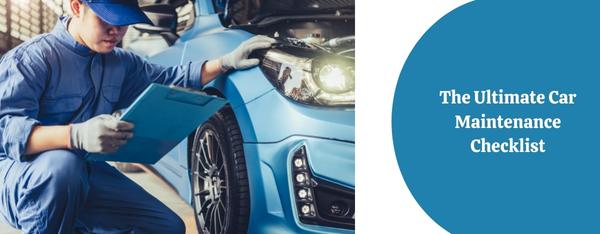
Every car is different and therefore has different maintenance needs. One of the best ways to learn about your car service & maintenance schedule is to start with your car owner’s manual.
Every vehicle owner’s manual has a detailed maintenance section for everything from standard oil changes to major belt replacements. If you don’t have the original owner’s manual, you can usually find one online.
Additionally, there are a number of websites and apps that offer generic maintenance schedules for different types of cars. However, it's important to note that these schedules may not account for the specific Make and Model of your car.
Just like your computer, your car needs routine maintenance to run its best. Not only will this extend the life of your vehicle and save you money in the long run, it can also help you avoid accidents.
While you can't control everything on the road, keeping your car in good shape gives you one less thing to worry about. Here are some easy DIY maintenance tasks that you can do to keep your car running smoothly.
Read our ultimate car service & maintenance checklist if you want to learn more on how to keep your car up and running like brand new.
1. Check the engine oil in your car
The most basic car maintenance checklist always starts with your car’s engine oil.
There are a few ways to check your oil levels - you can use the dipstick or, in some newer vehicles, an electronic gauge. If the oil is really dark or looks muddy in texture, it’s time for a change.
Good engine oil is somewhat translucent with a smoother texture to it. Keep an eye on your oil levels and, if necessary, change your oil according to your manufacturer’s recommendations.
Automotive oil change businesses will place stickers on your windshield with a future odometer reading as their recommended point for when you should change your oil again. However, not every vehicle is the same—nor is every engine—so the number provided may not necessarily match up with the automaker’s suggested threshold.
2. Checking the battery
Your car battery is important for keeping your vehicle running, and by following a few simple steps, you can easily test or replace it as needed.
3. Check, rotate, and change your tires
Inspecting your tires' pressure is important, and you can get clues about each of the four tires by doing a simple walk around. Check the treads to see if they need to be replaced. A good way to know if new tires are needed is by the "Toonie Test":
4. Check your air and cabin filters
There are two key filters that affect both the engine and the air quality in the cabin- the engine air filter and the cabin filter. The engine air filter protects the engine by keeping dirt, debris, and other contaminants out. This also includes preventing dust or other particles from going from the cabin into the engine.
The cabin filter blocks pollutants that could potentially flow through the car’s HVAC system into the cabin. Dust, smog, pollen, and mold spores are prevented from contaminating the air inside by the cabin filter. To keep the air quality inside the cabin clean, you will need to replace the cabin filter regularly.
5. Check your spark plugs
The health of your spark plugs is important for the efficiency of your engine. Over time, they can succumb to buildup that will degrade their performance. Check your owner’s manual to see how often the plugs should be replaced, but you may have to do it sooner than that if:
- Your car struggles to accelerate.
- You have trouble starting the engine or hear strange “popping” misfire sounds.
- You notice a worsening fuel economy.
If any of these things are happening, it’s time for some new spark plugs.
6. Looking at the belts
Timing and serpentine belts are two of the most common car parts that will eventually need to be replaced. Every vehicle is different, so manufacturers have different recommendations for when you should replace them. These aren't easy to replace outside of a garage, so it's best to leave it to a mechanic to handle.
Wrapping Up
Though there are many things to check in your car, these six signs will be enough to decide whether it’s time for the periodic maintenance of your car.




